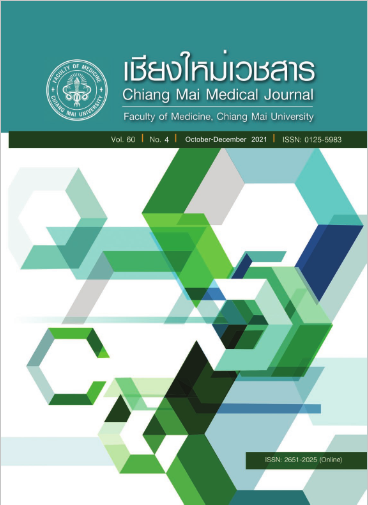The relationship between fasting blood sugar and HbA1c as it pertains to medication adjustment in type 2 diabetic patients of Bungnarang Hospital, Phichit
Main Article Content
Abstract
Objectives To evaluate the relationship between fasting blood sugar (FBS) and HbA1c, to estimate the FBS cutoff point that predicts an HbA1c of 7%, and to study medication adjustment behavior based on FBS results.
Methods A retrospective cross-sectional study was conducted by reviewing patients’ medical records, including results of FBS and HbA1c measurements. Pearson’s correlation and Receiver Operating Characteristic Curves were used to determine the relationship between FBS and HbA1c. Sensitivity and specificity tables were used to identify the FBS cut-off point that would predict HbA1c of 7%.
Results Of a total of 211 patients were included in the study, 117 had FBS > 130 mg/dL of whom 17.09% had received medication adjustment. FBS was found to be correlated with HbA1c and able to predict HbA1c of 7% with statistical significance (r = 0.55, p < 0.001), (AUC = 0.68). An FBS cut-off point of 130 mg/dL had a sensitivity of 62.00% and specificity 60.66%. In patients with higher FBS values, the specificity in predicting HbA1c increased to ≥ 7%. However, the proportion of patients with glycemic control who received medication adjustment based on FBS results was low.
Conclusions A moderate correlation exists between FBS and HbA1c. Higher FBS values increase the specificity in predicting HbA1c. When a standardized HbA1c assay is not available, the FBS cutoff point of 150 mg/dL can be used as a guide to adjustment of medication to help the patient reach the treatment goals faster.
Article Details

This work is licensed under a Creative Commons Attribution-NonCommercial-NoDerivatives 4.0 International License.


